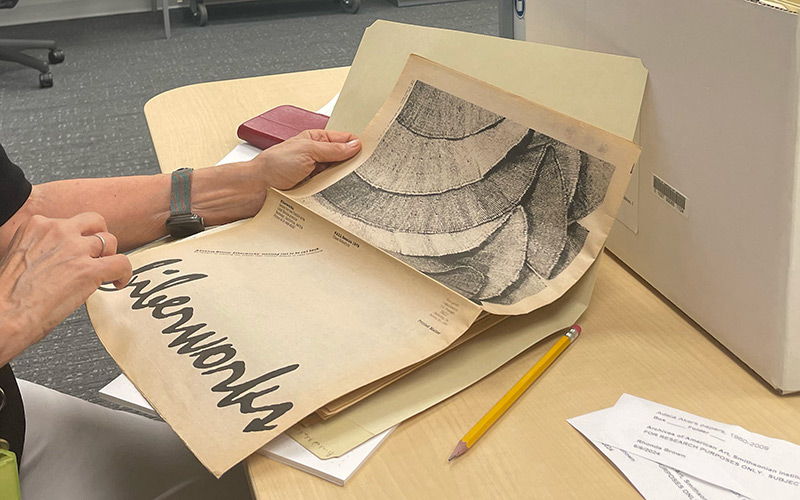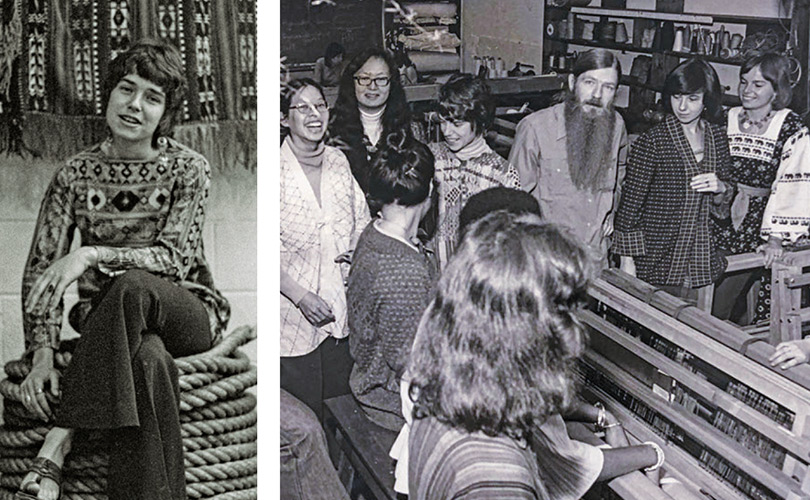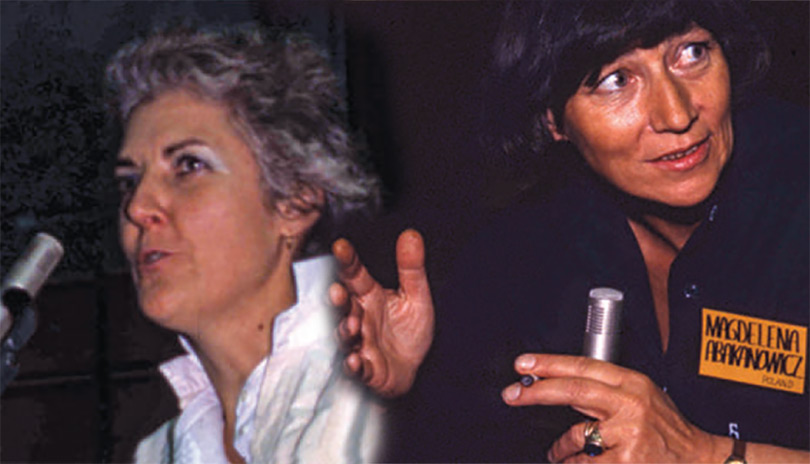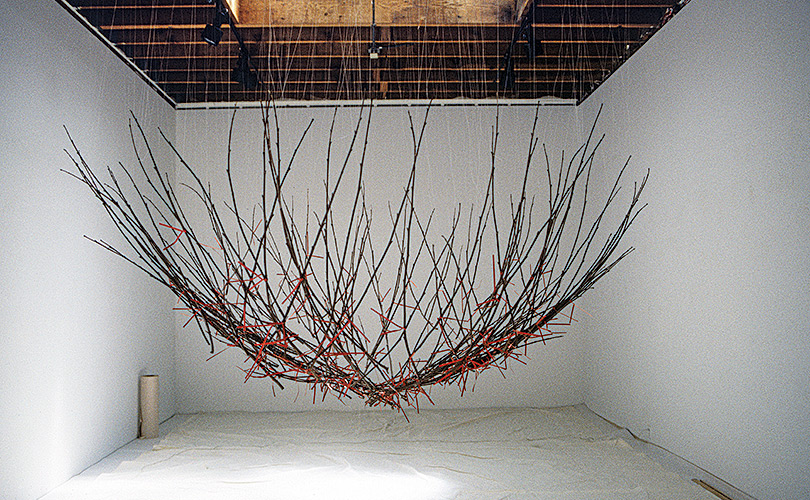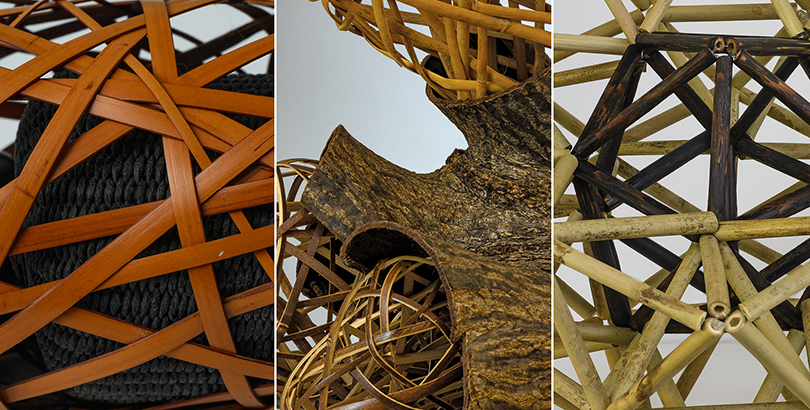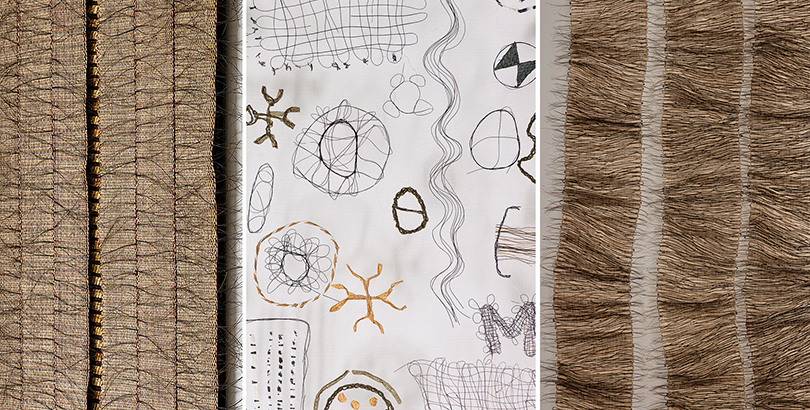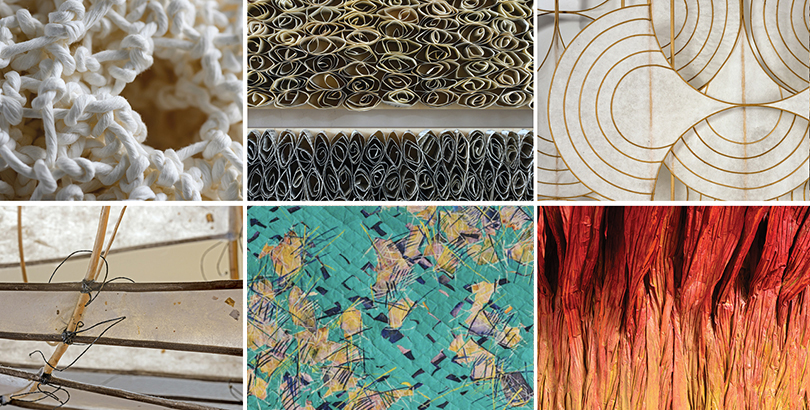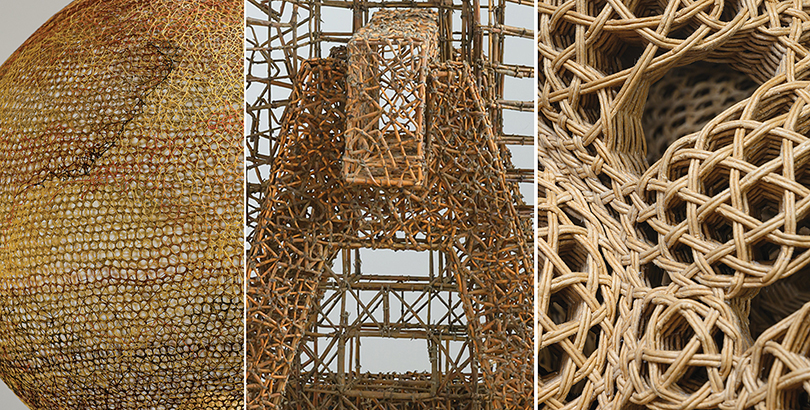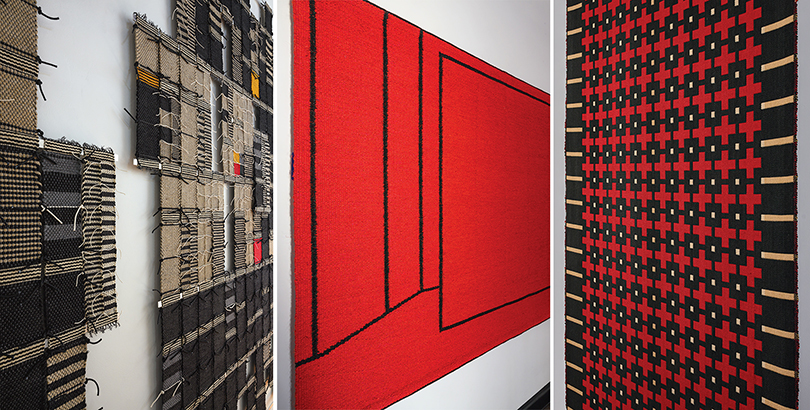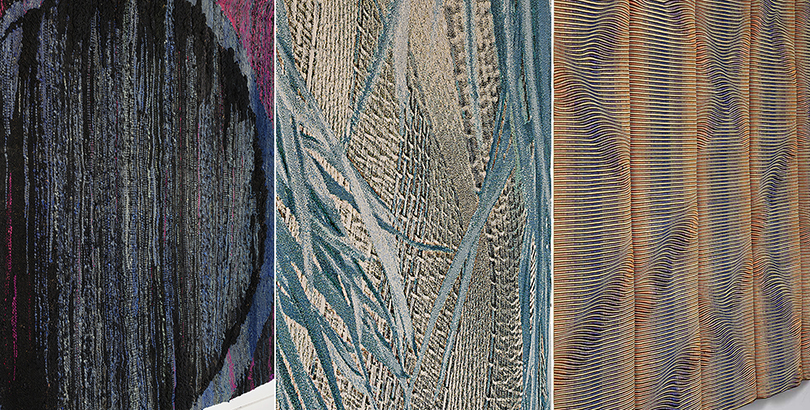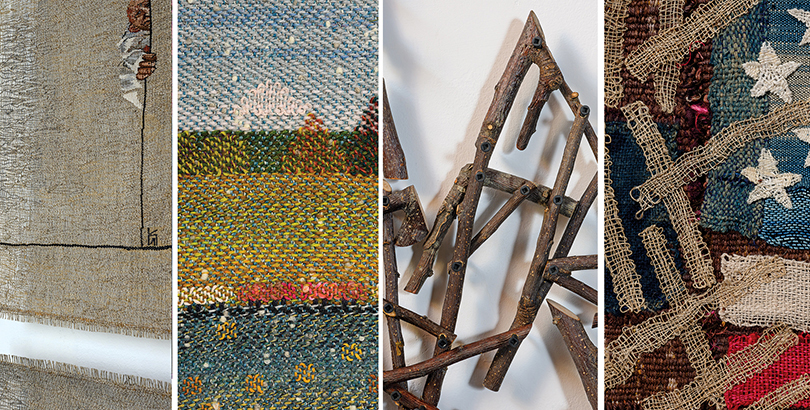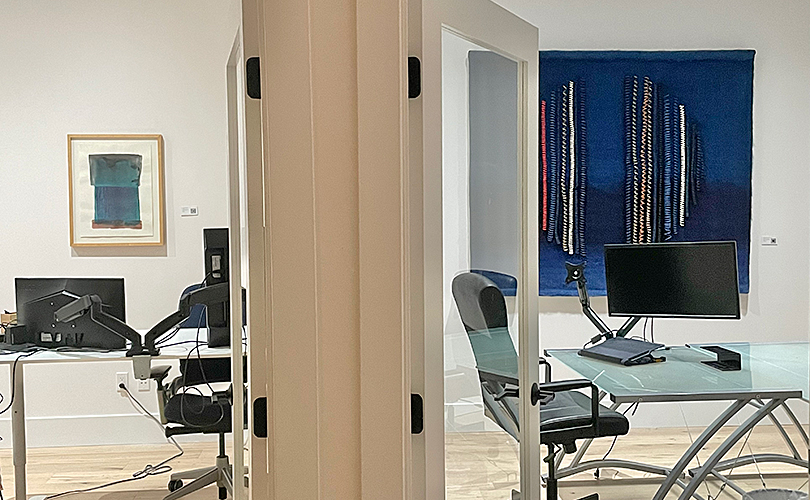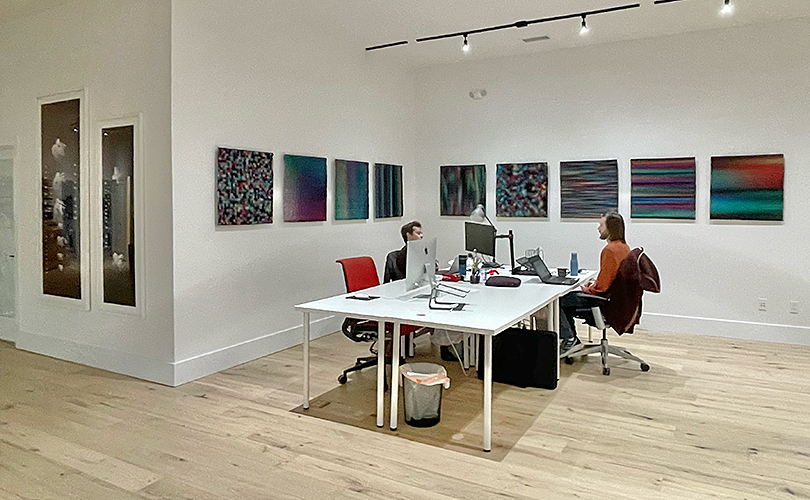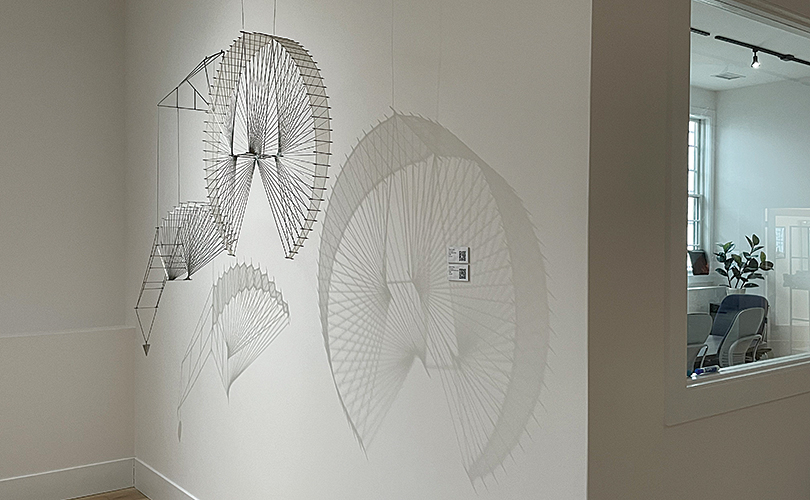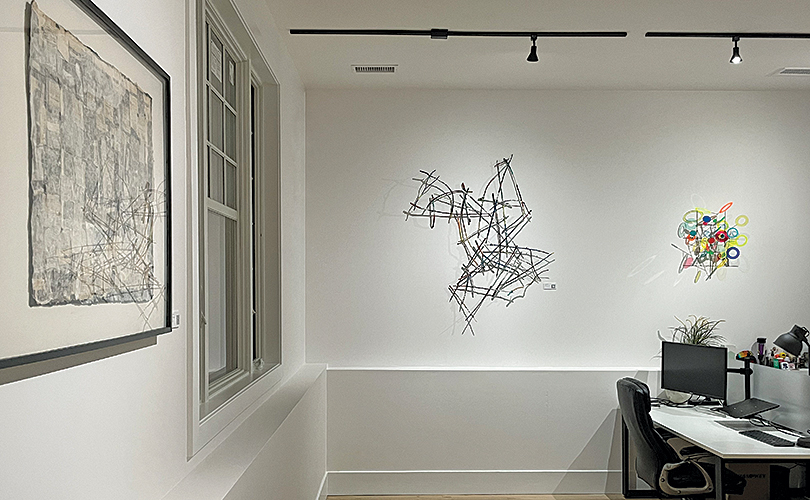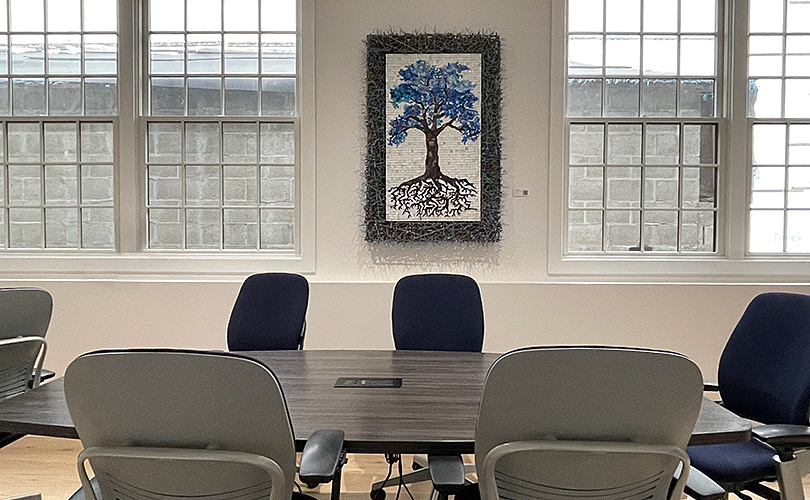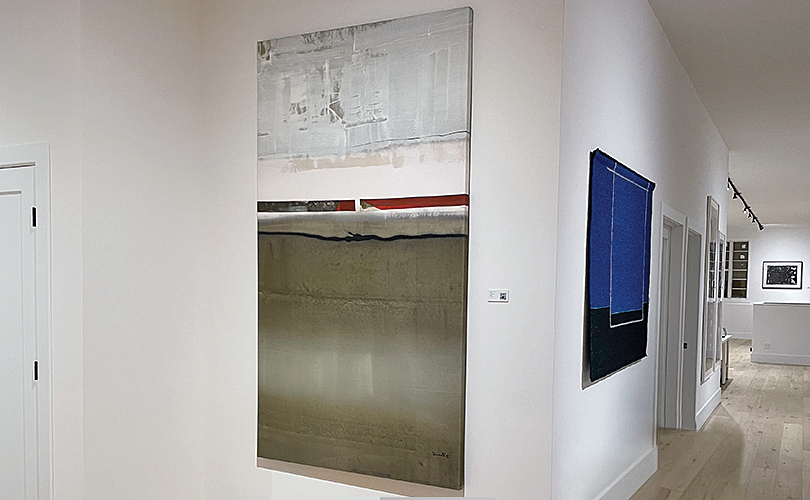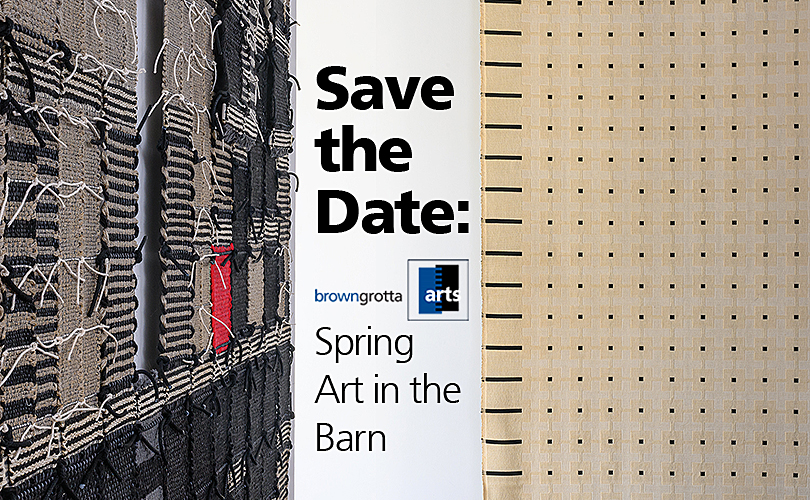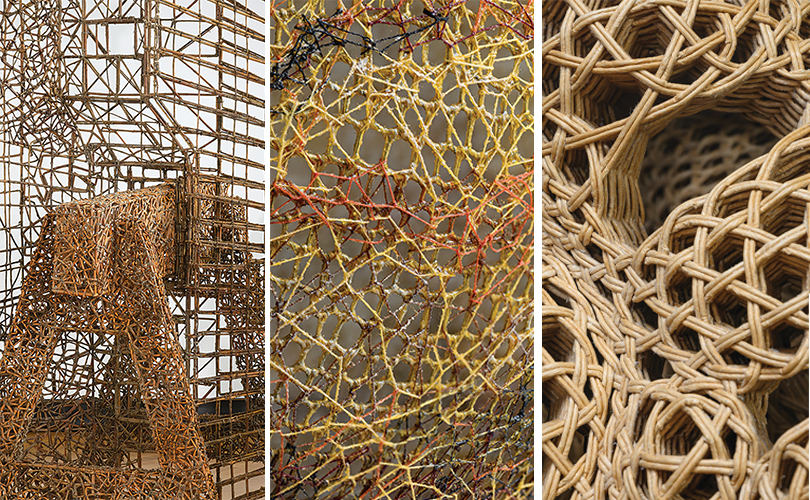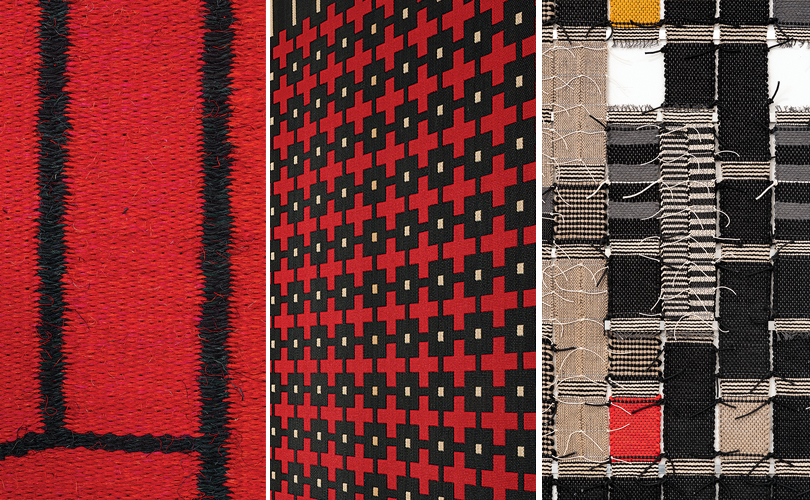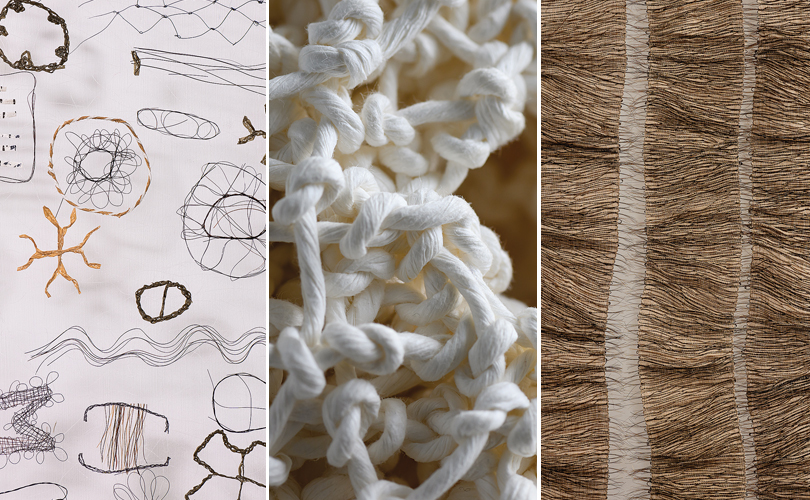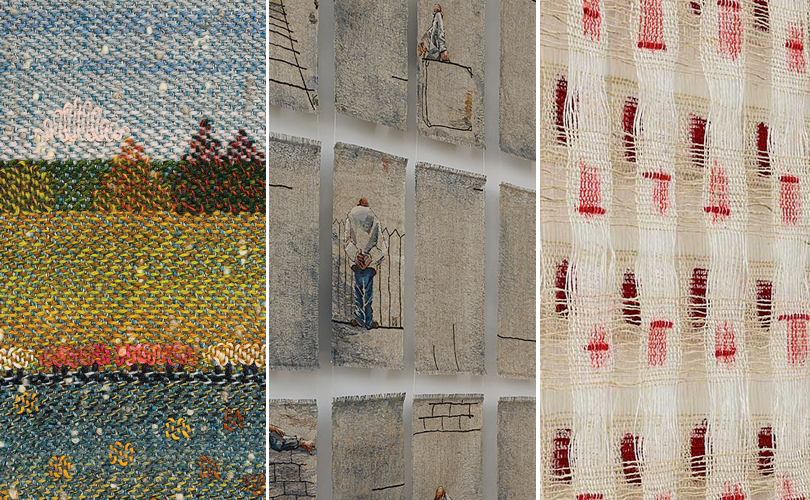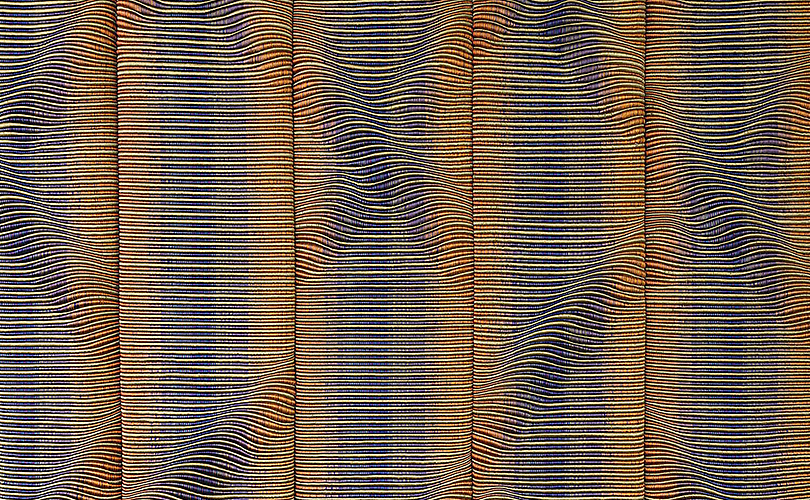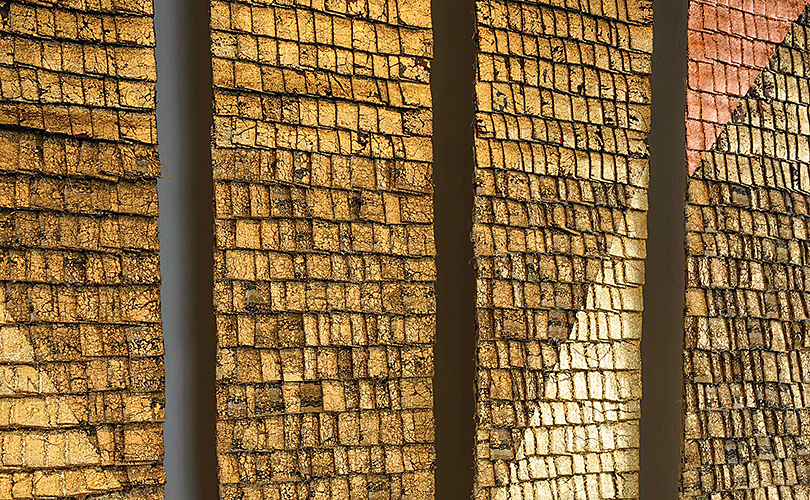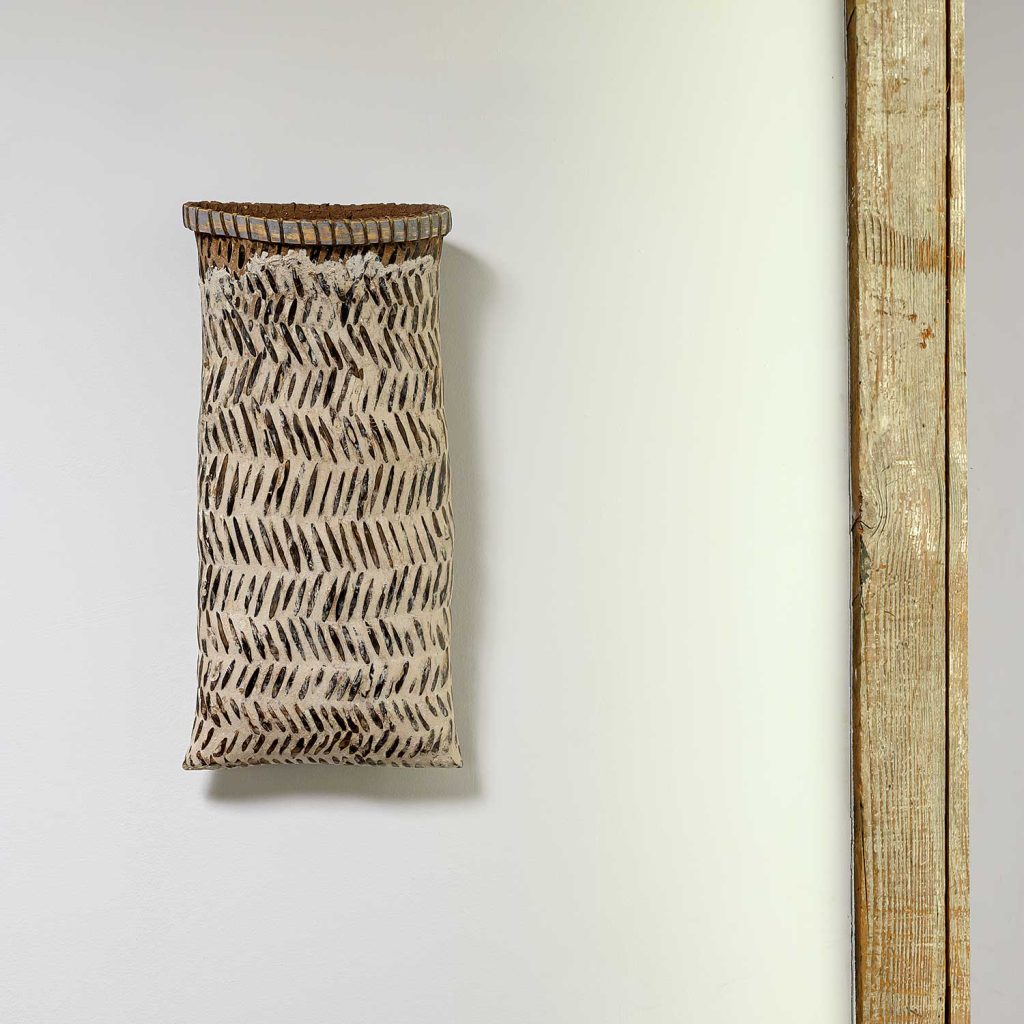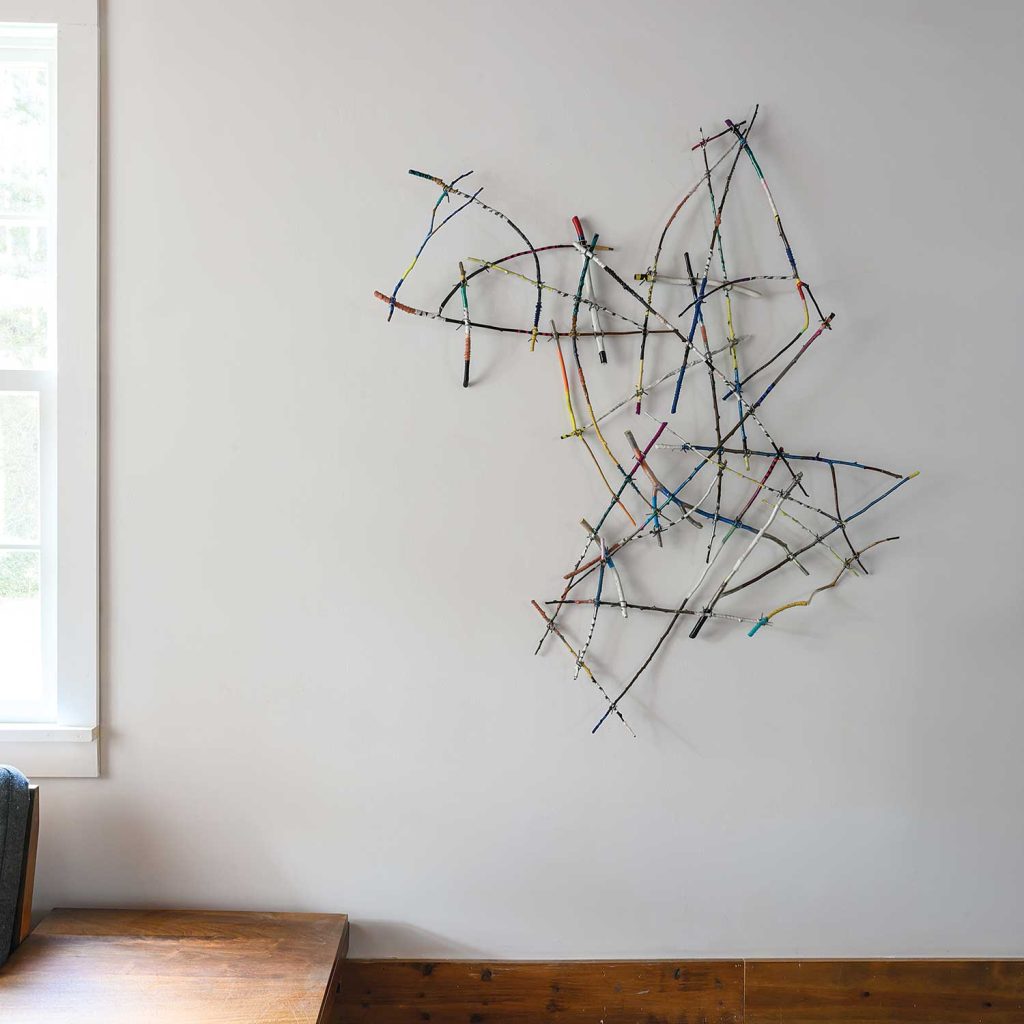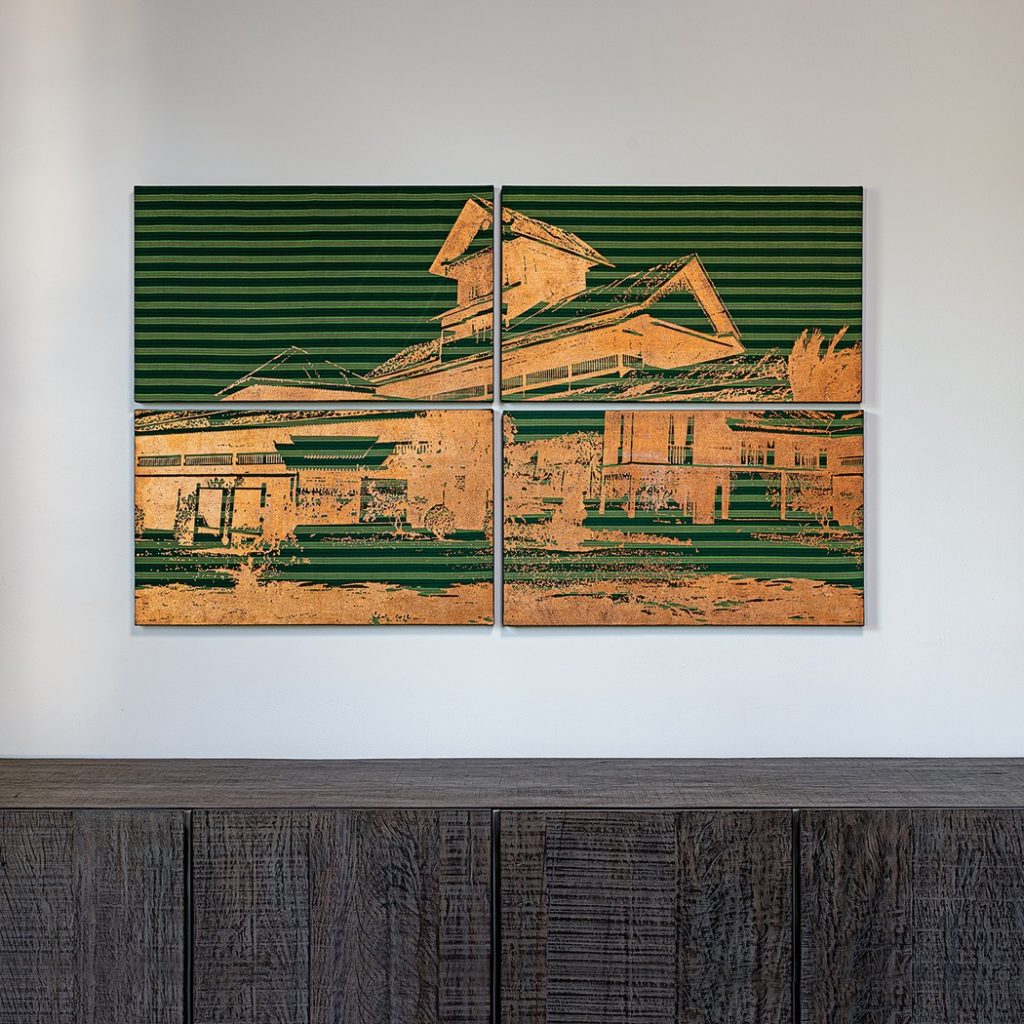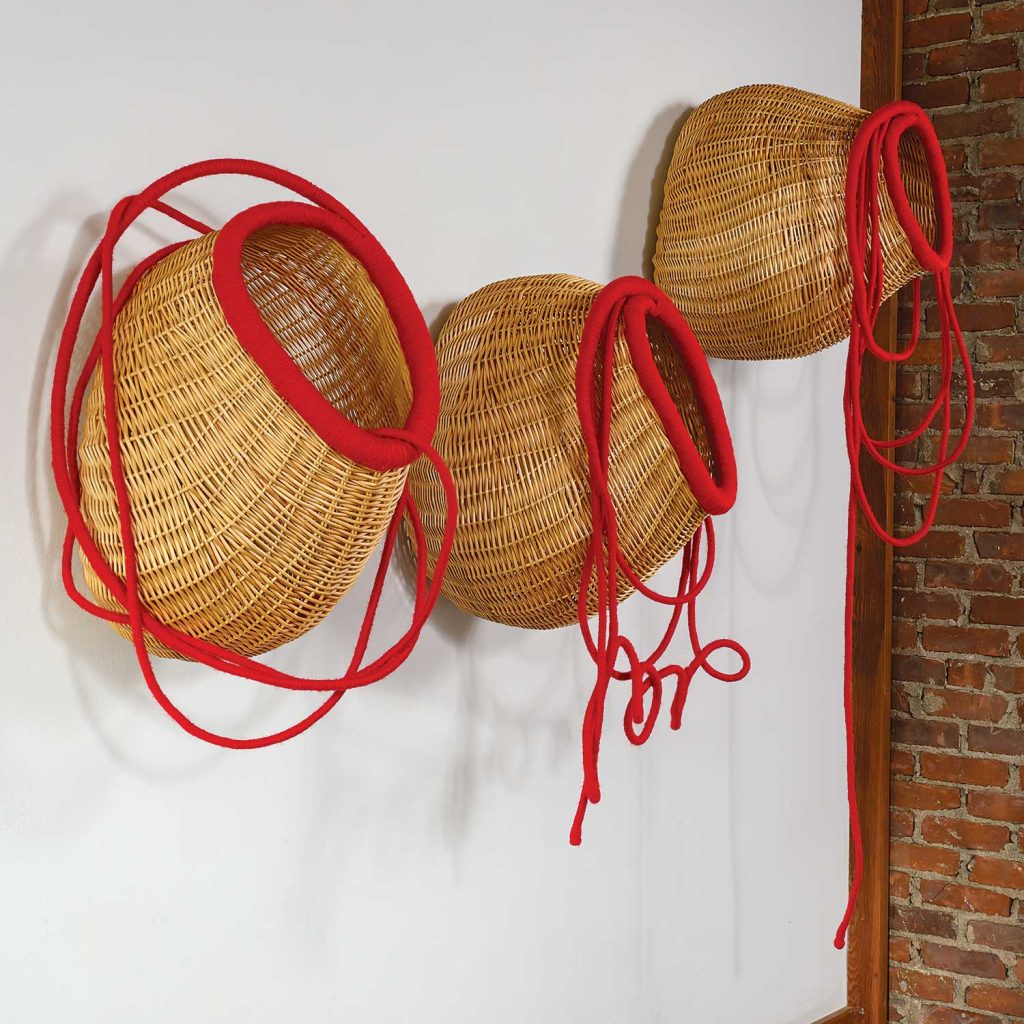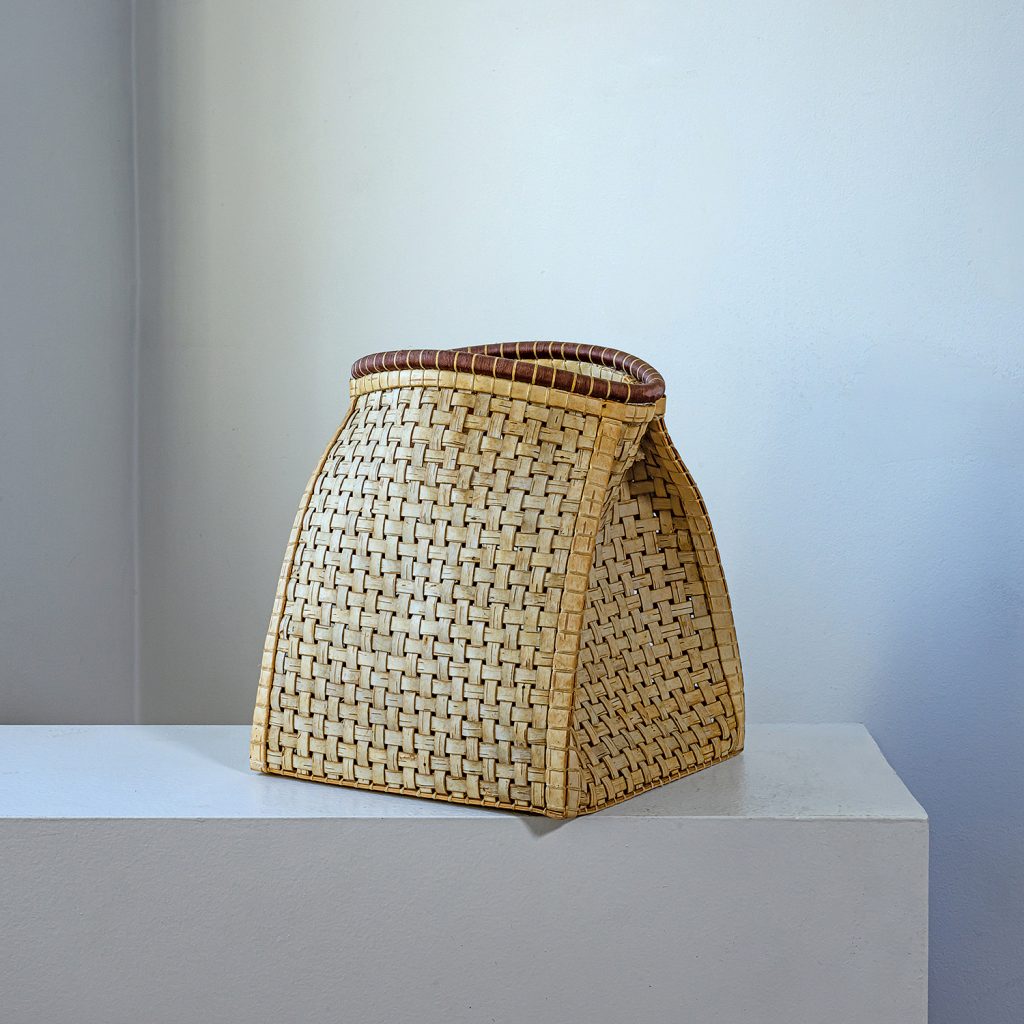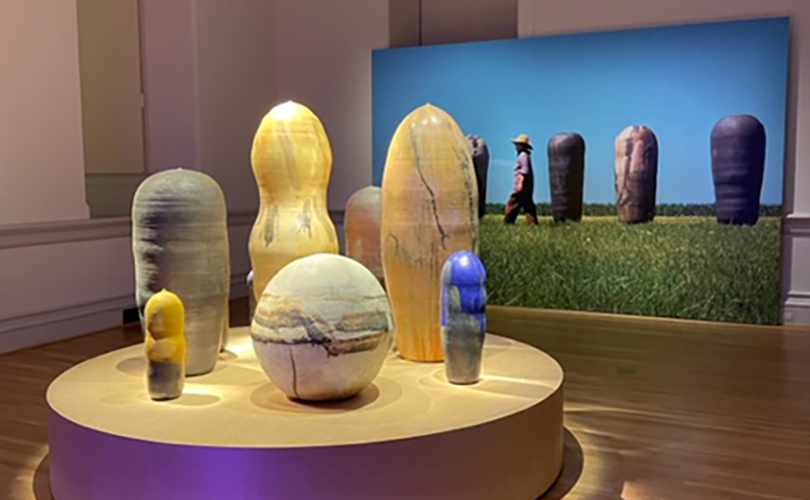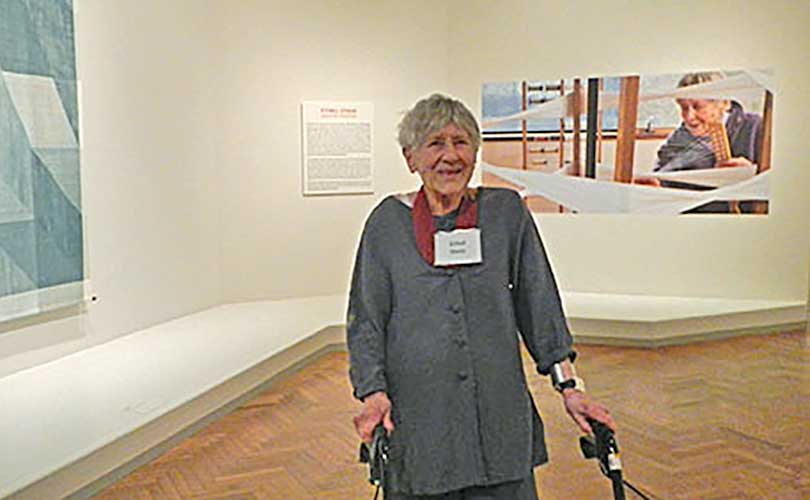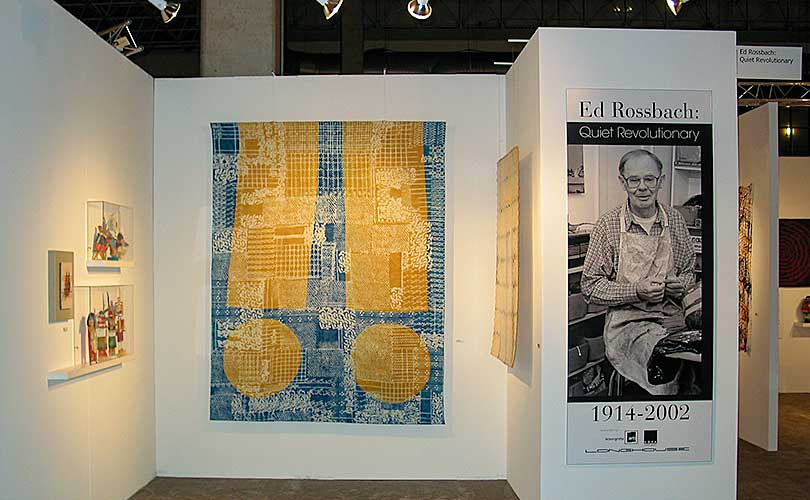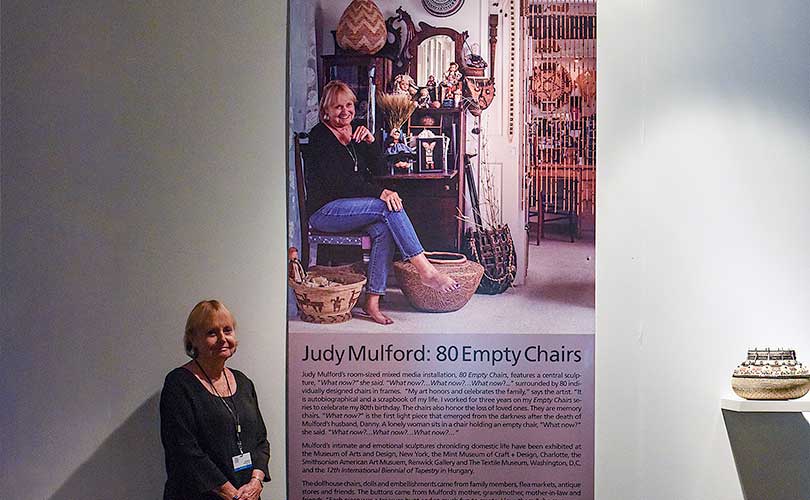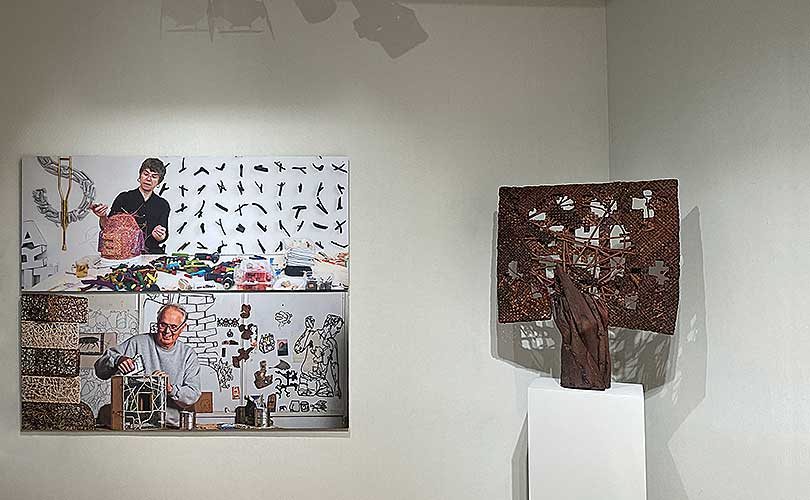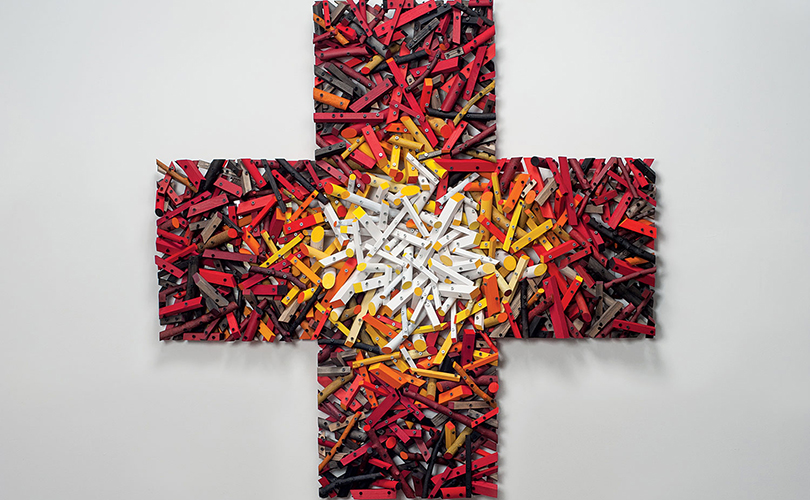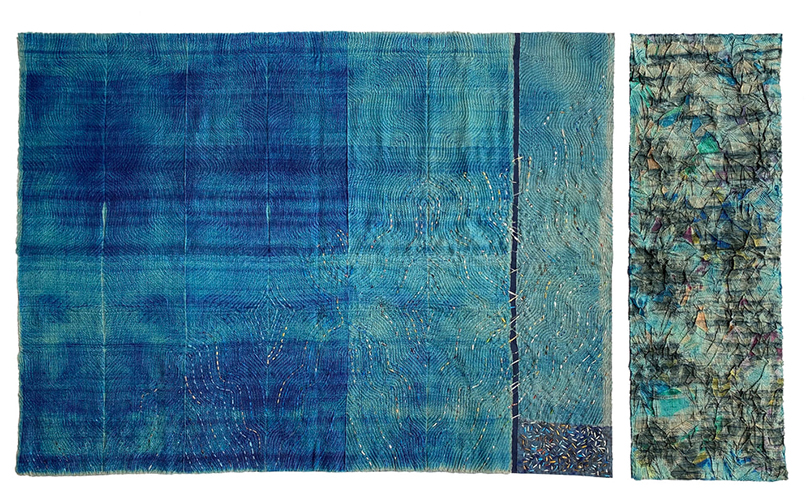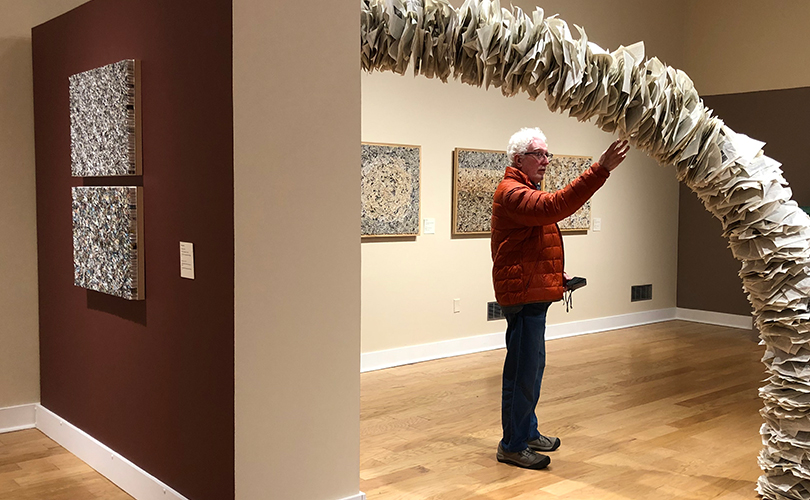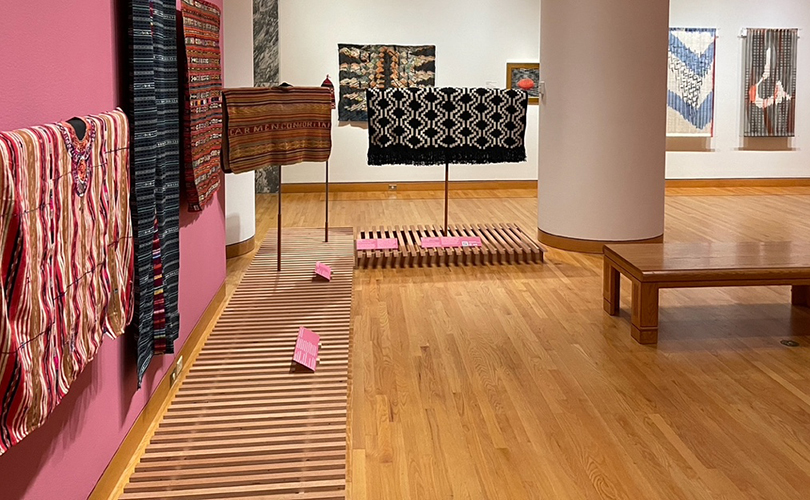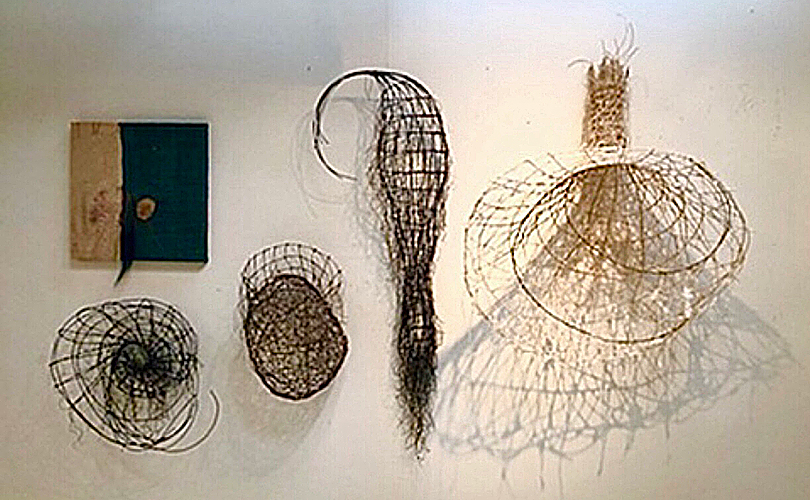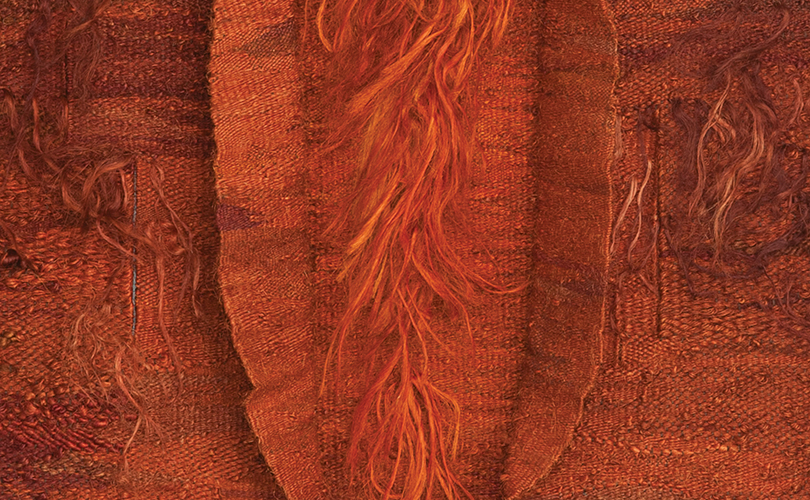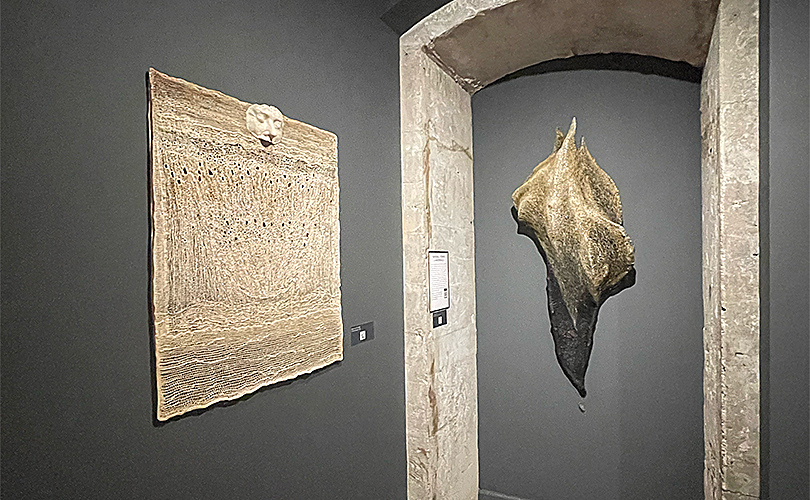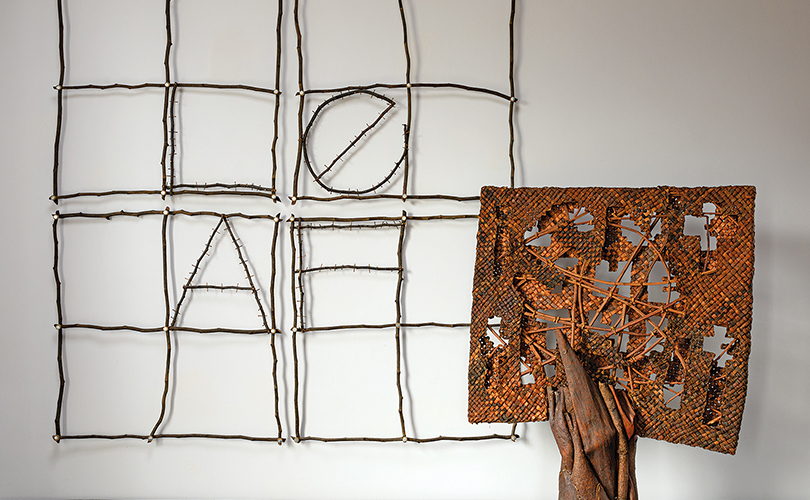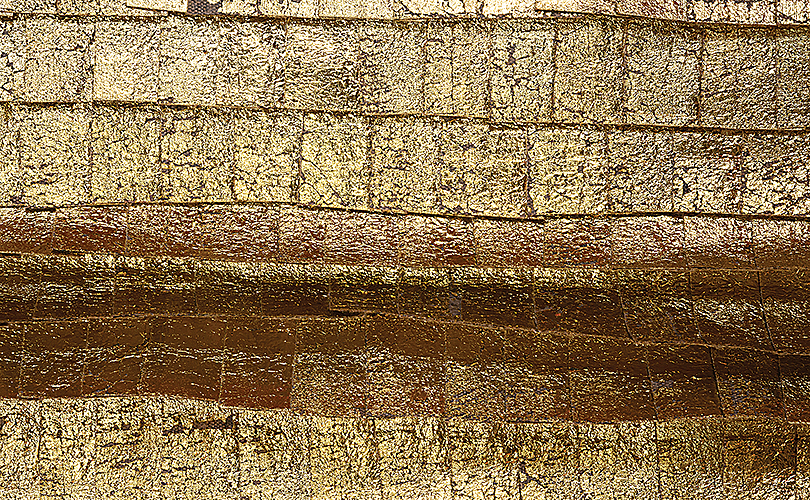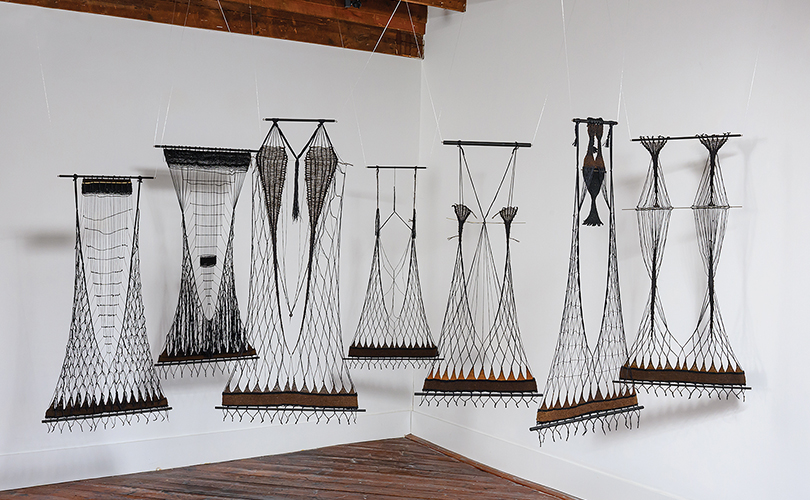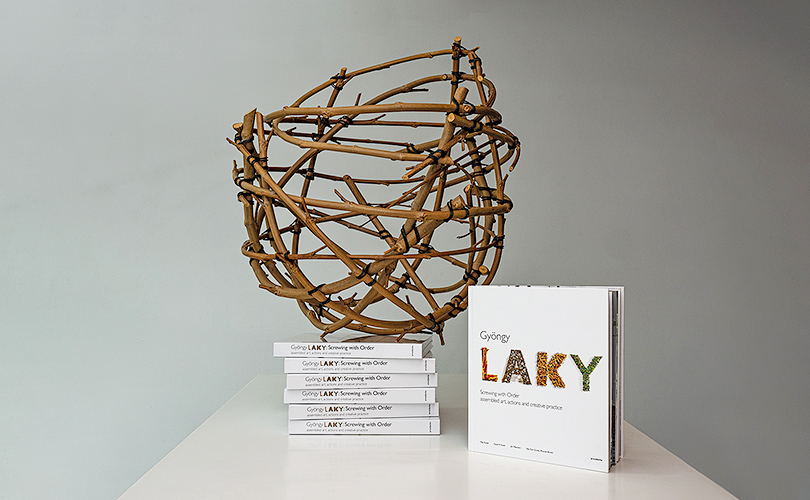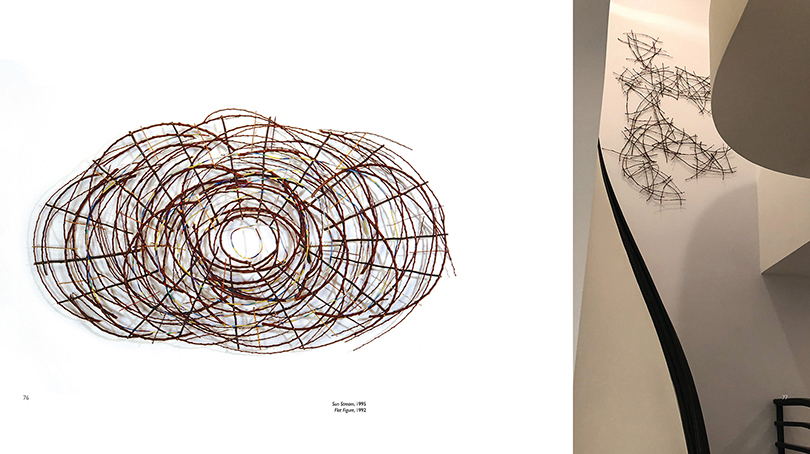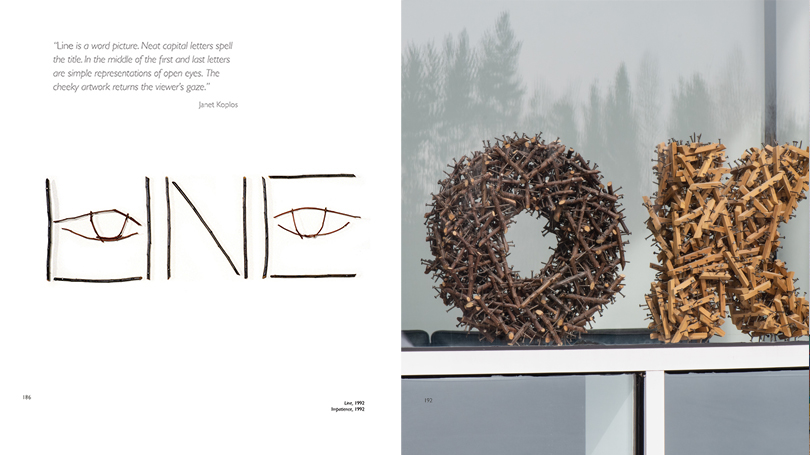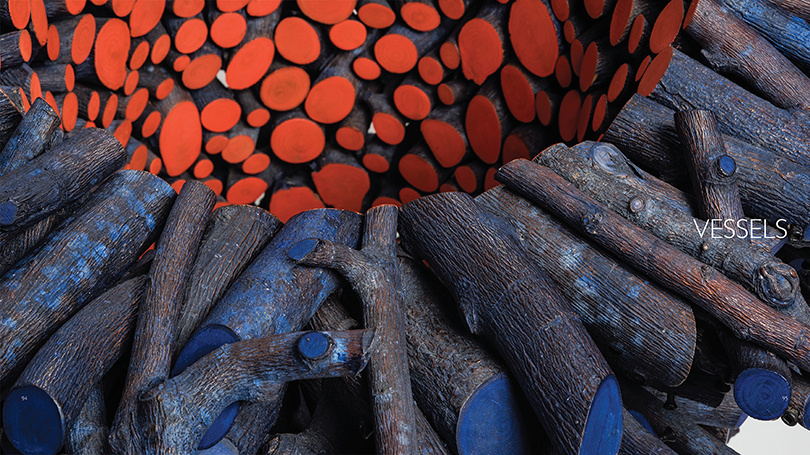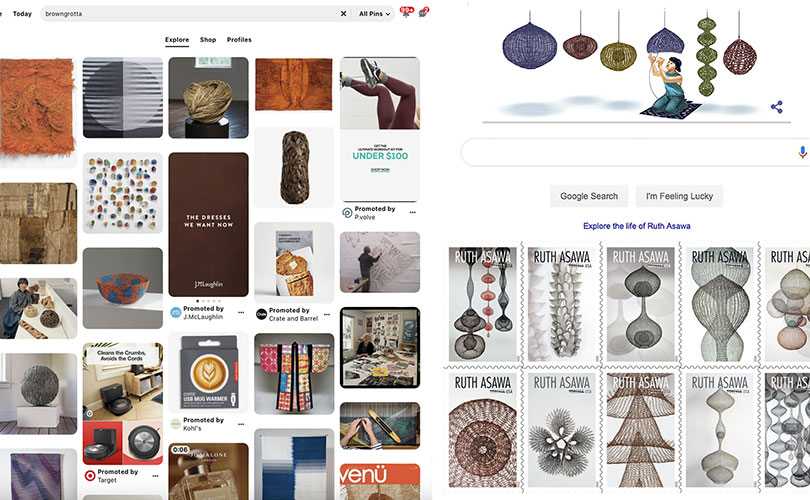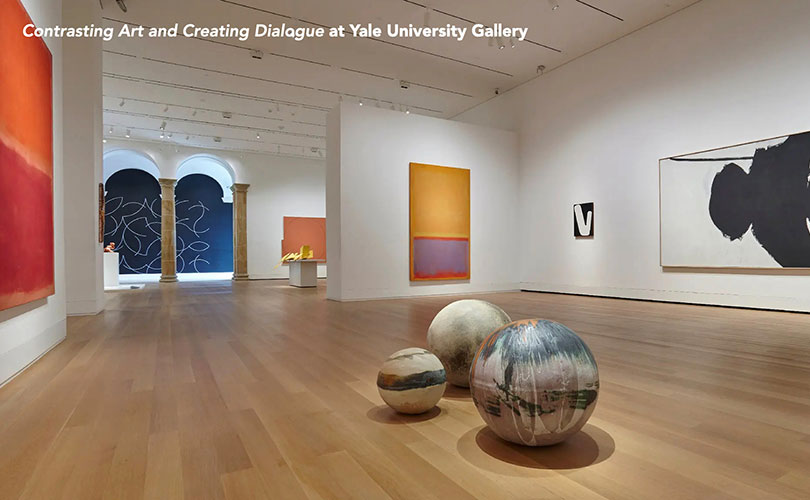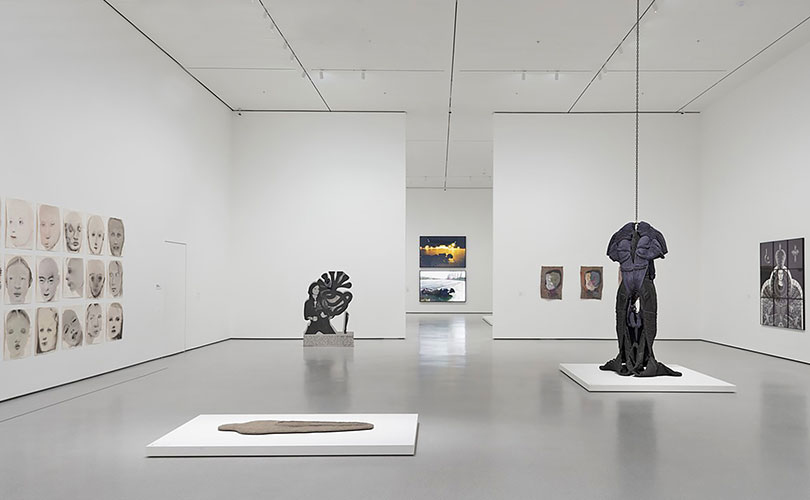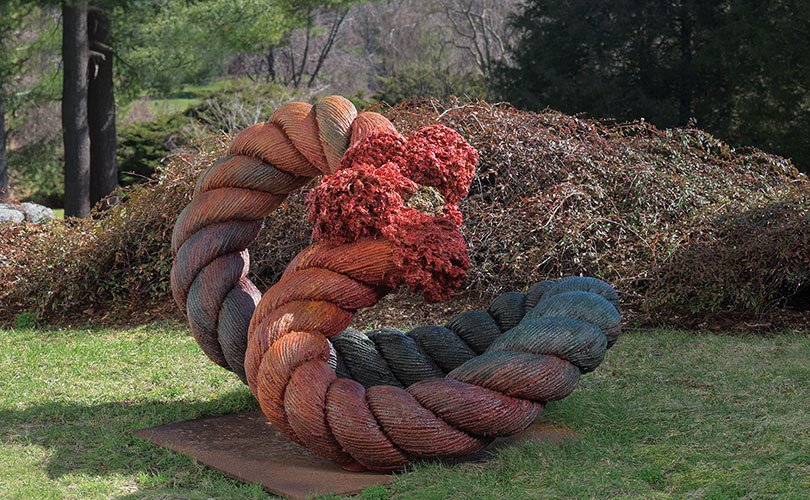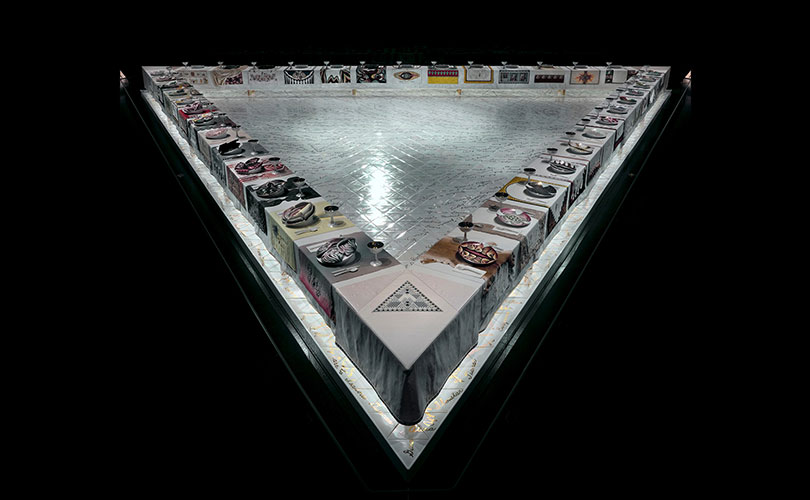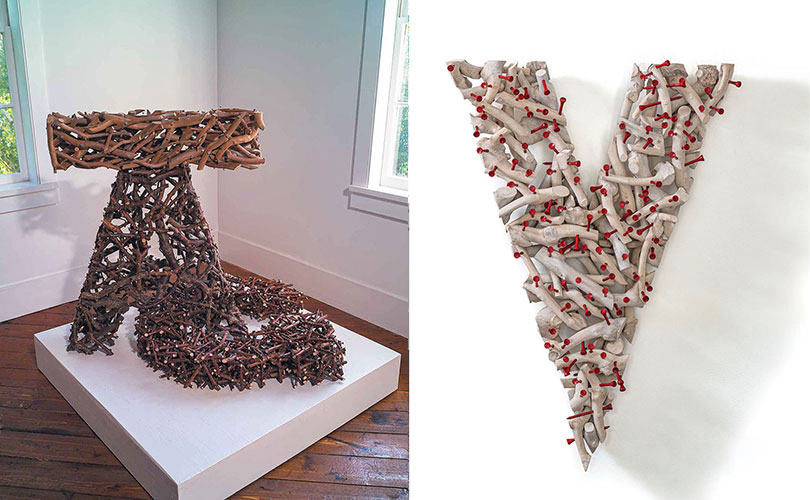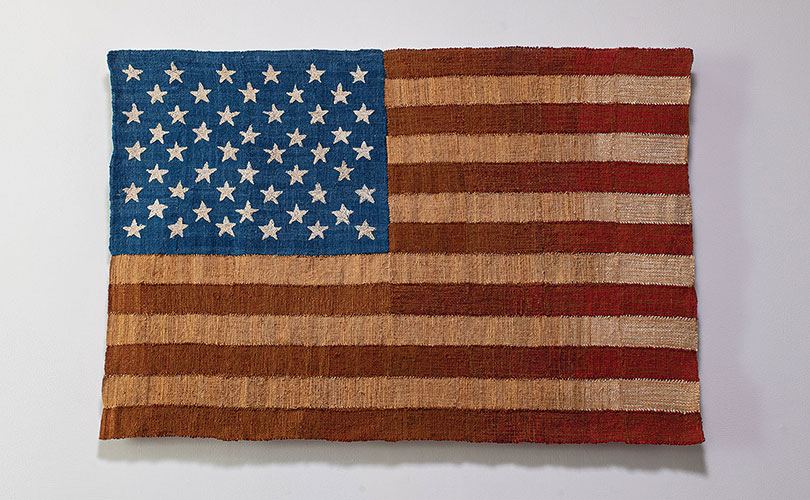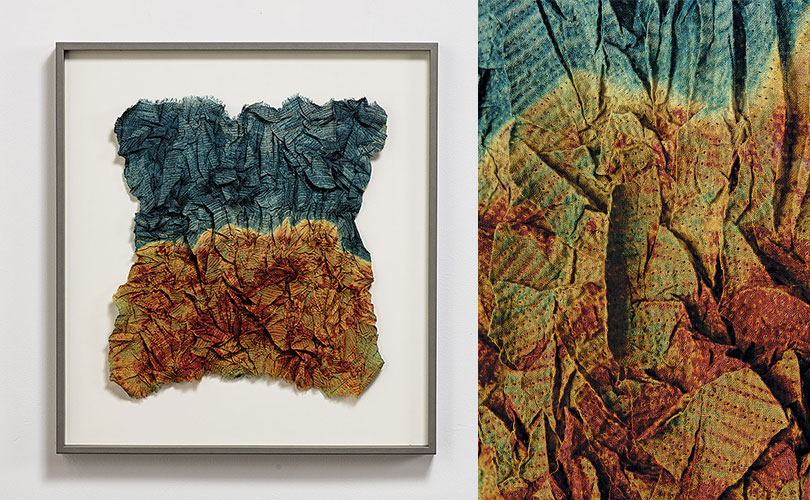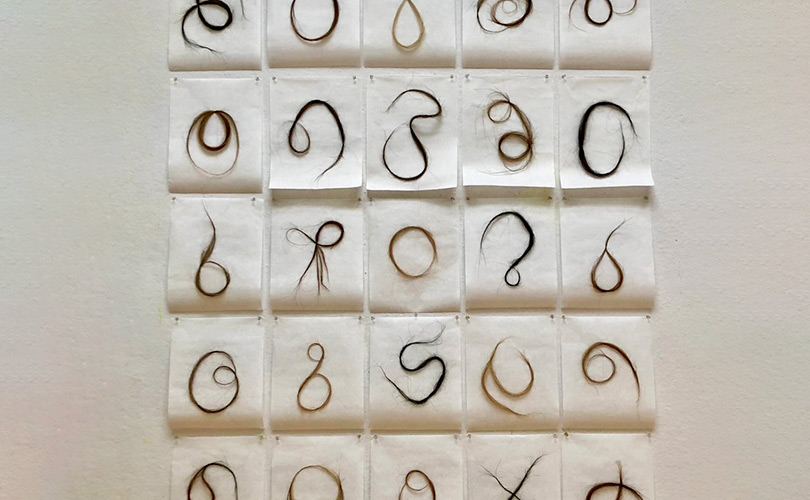
Wendy Wahl had two 2024 book recommendations to share. “Many years ago, while at Haystack Mountain School of Crafts, I discovered Mysteries of the Alphabet by Marc-Alain Ouaknin (Abbeville Press, 1999).
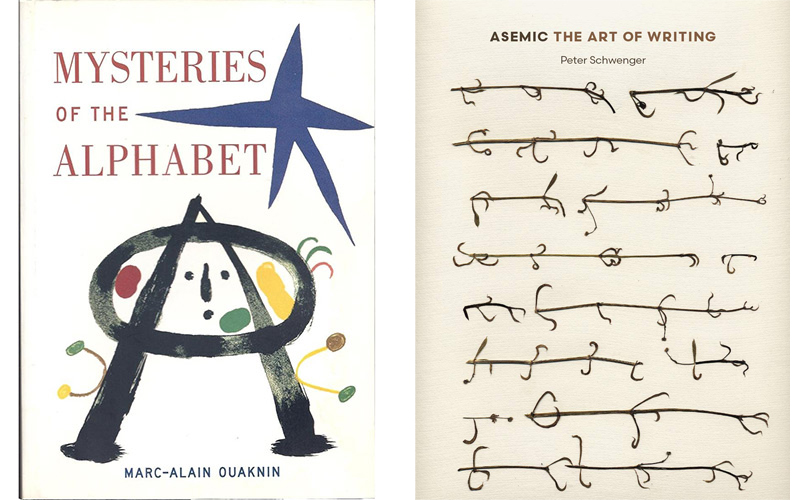
I was as interested then as I am today in the world of alphabets and their origins. This compact book is a compilation of signs, symbols, and pictograms that have been a part of the evolution of letters and their meaning over the past 3,500 years.” In 2021, Wahl made a piece called Equine Calligraphy, composed of hand-gathered and manipulated horsehair stitched to paper with strands of the same hair. She found a category for this kind of work when she came across Asemic: The Art of Writing by Peter Schwenger. The book is a survey of contemporary asemic writing and its place between art and recognizable script. [Cliff Notes version — asemic means writing without language.] The book was ecstatically reviewed: “vital and fateful;” “engaging and groundbreaking.” https://www.artnews.com/art-in-america/aia-reviews/asemic-writing-peter-schwenger-cy-twombly-roland-barthes-1202688046/.
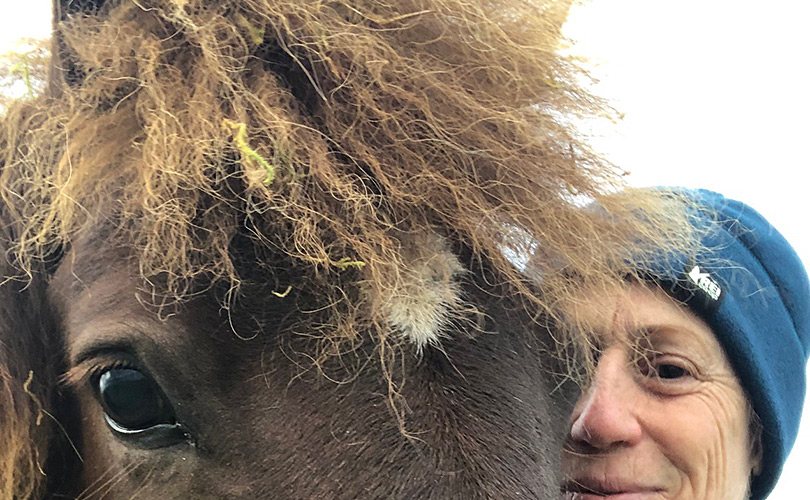
“I was excited to realize that browngrotta arts’ artist Marian Bijlenga‘s artwork was used for the book’s cover,” Wahl wrote. browngrotta arts carries a book by Bijlenga, Written Weed, containing collages by the artist made of dried leaves, grasses, and seeds. The images are like handwriting, Chinese characters, the letters of an alphabet.
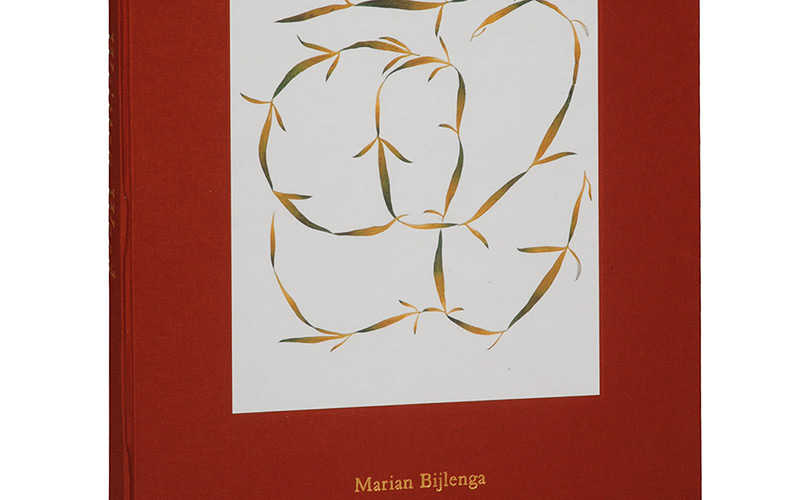
Gyöngy Laky is another artist who is interested in alphabets and messaging without recognizable forms as in the work Notes to Self. Author David Roth, says “her use of language is decidedly postmodern, seen in how she presents symbols and signs as inherently porous and unstable, subject to all the forces that influence perception and thought.”
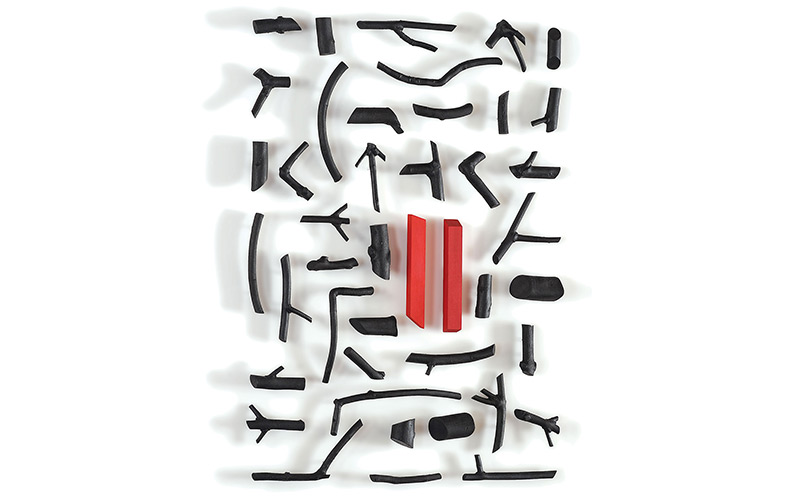
(“The Architecture of Thought,” David M. Roth, in Gyöngy Laky, Screwing with Order: assembled art, actions and creative practice, arnoldsche, 2022).
Heidrun Schimmel creates “pages” of stitches that appear to be writing, but are not.
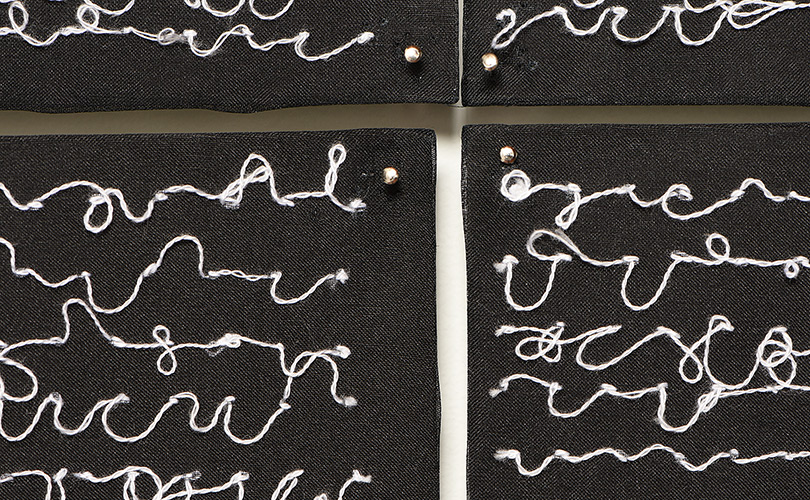
47.5” x 49.5” each, 2009. Photo by Tom Grotta
Caroline Bartlett has explored text/nontext works, too.
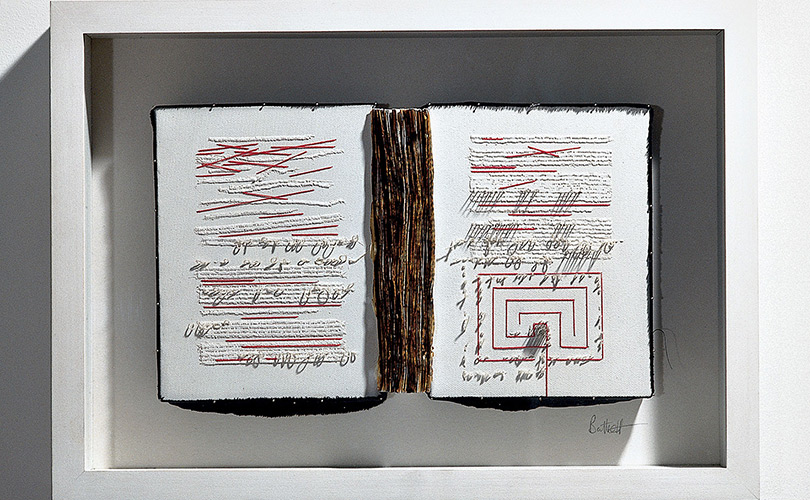
These books and artworks offer novel ways to explore how art, words and communication combine.

